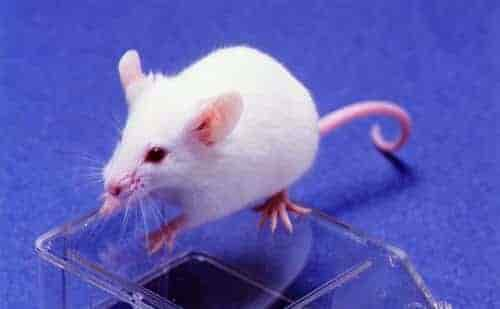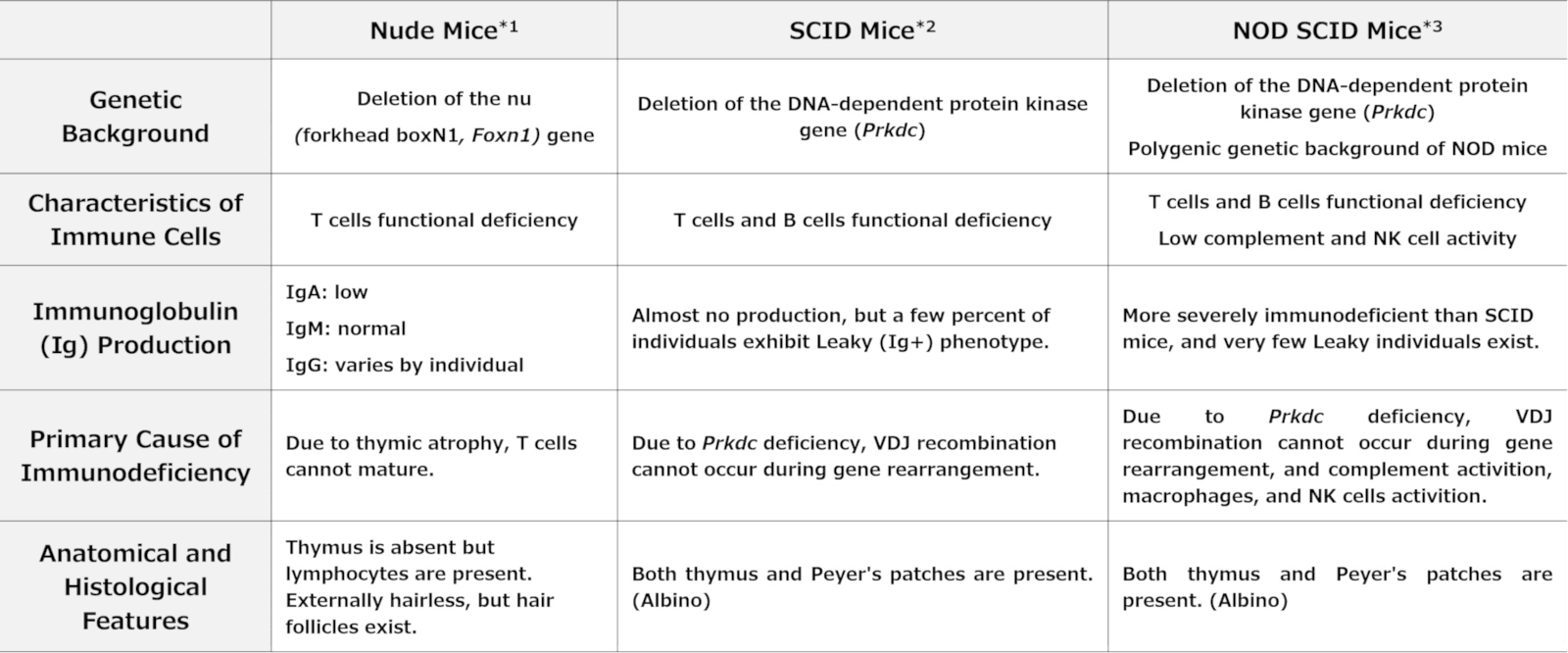C.B-17/Icr-scid/scidJcl
Animals/Immunodeficiency Models/

Ordering name: C.B-17/Icr-scid/scidJcl
Nomenclature: CB17/IcrJcl-Prkdcscid
Availability: Live colony
Not genetically modified animal
Characteristics
Because homozygotes (scid/scid) lack functional T cells and B cells, there is hardly any production of immunoglobulin in addition to the absence of cell immunity. These mice present with symptoms similar to those of human severe combined immunodeficiency. After judging the presence/absence of immunoglobulin production at 4 weeks after birth, we supply 5-week-old or older mice, removing Leaky mice.

※The following are the formal names for each animal in our company:
*1 BALB/cAJcl-nu/nu、 *2 C.B-17/Icr-scid/scidJcl、 *3 NOD/ShiJic-scidJcl
Use
- Various immunology and cancer studies
- Studies using human hematopoietic cells or transplantation of human tumor cells
- Microbiological studies, etc.
Origin
Dr. M. J. Bosma and his colleagues at the Fox Chase Cancer Center found mutant mice that have symptoms similar to human severe combined immunodeficiency among C.B-17/lcr mice from a congenic strain of BALB/cAn with a different Igh gene locus. Because the characteristics are under the control of a single recessive gene, the gene was named scid. After establishing a contract with the Cancer Center, we started the production and supply of this species.
Rearing management of immunodeficiency models
Microbiological control of immunodeficiency model animals should be managed strictly because of their properties. Due caution is necessary against opportunistic infections with normal inhabitant microorganisms as well as microorganisms that are pathogenic in mice and rats.
- Requiring workers to wear specialized protective clothing that covers all exposed skin and to use respiratory filters.
- Supply of boiled and chlorine-added water and autoclaved diet (CL-2)
- Prevention of falling bacteria using filter caps and handling animals using tweezers or disposable gloves
Our Contract Research Services related with This Animal
For details on our contract research services, including cryopreserved embryos, contracted testing, and the provision of research materials such as blood and organs, please click here .


